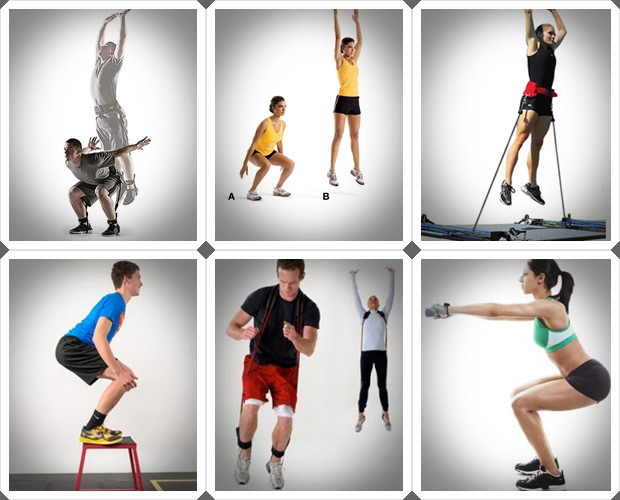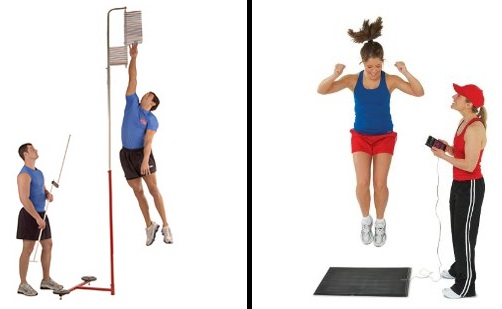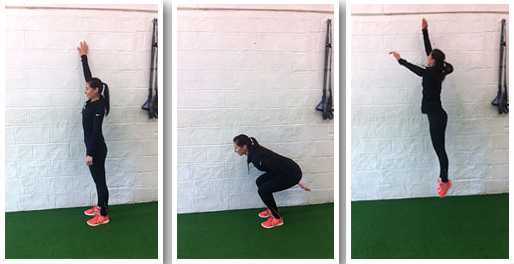A good vertical jump is a valuable asset for all of your players to possess. It will help your team get more rebounds, blocks, and steals. It will also let a few (or many) players on your team dunk the basketball, which can lead to increasing your teams confidence, enthusiasm, and can it make the game a lot more fun!
Want to Know the Best Part?
Here it is:
Warming Up-
I recommend jumping rope for a couple of minutes to warm-up and increase the blood flow to your muscles.
Phases-
The program is broken up into three different phases consisting of four weeks each. This is because as you continue through the program your muscles will adapt to the intensity of the workout, therefore we need to keep increasing the workload in order to continue increasing your vertical jump.
Frequency
Perform the routine every second day to give your body a days rest in-between workouts. This means that on week one you’ll be training 4 times a week, week two you’ll be training 3 times per week, and on week three you’ll be training 4 times per week. That ends up being 11 workouts per phase for a total of 33 workouts in the program. Also, during this program, you will be taking one week off between each phase to let your body completely recover. You need to give your muscles time to fully repair in order to grow stronger and more explosive.
Rest Intervals-
One minute rests in-between all sets.
Record Your Progress
Keep track of how much progress you’ve made at the end of each rest week. It’s going to be hard for your players, but stress that if they really want to see results it’s best that they wait until the end of the rest week.
Exercises:
1.Jumping Rope -A skipping rope is the only piece of equipment involved in the program. If you don’t have a piece of rope either jumping up and down on the spot without much bending in the knees will achieve a similar result. Jumping rope involves holding a rope with both hands and swinging it around your body continuously.
- Photo Credit From wegoodhealth.com/WEIGHTED JUMP ROPE
2.4-Corners- Involves you imagining 4 dots in a square shape about 15 – 20 inches apart. To complete 4-corners you hop around the square in a clockwise direction landing on each dot for the required number of repetitions. 4 jumps and completing the square equals one repetition.
3.Single-Leg 4-Corners- Exactly the same as 4-Corners except performed on one leg.
4.Slow-Motion Squats -Involves standing with your feet shoulder-width apart. From this position slowly lower down until you are in a deep squat making sure your heels are flat on the ground. Hold for 2 seconds before slowly rising back to the starting position. The descent and rise should each take 4 seconds to complete. Throughout the entire exercise make sure to keep your head up and your back straight.
- Photo Credit From marksdailyapple.com/9 Worthy Alternatives to the Back Squat
5.Tuck Jumps- Tuck jumps involve descending into a comfortable squat and then jumping as high as possible and bringing your knees to your chest.
6.High-Reach Jumps – Are similar to tuck jumps, but instead of brining your knees to your chest, you just reach as high as you can. This is done best with a basketball ring or near a wall so that you can tell how much lower your reach becomes as you fatigue.
7.Lateral Jumps – Lateral jumps are performed best with over a line or a stick. They involve standing parallel to the line on one side and then quickly jumping sideways back-and-forth over the line. Over and back equals one repetition.
- Photo Credit From siphotos.tumblr.com/Jordan to blame for Bobcats miserable season
8.Single-Leg Lateral Jumps – Exactly the same as lateral jumps except performed on one leg.
9.Alternating Lunge Jumps – From a normal standing position, take one step forward with your right foot and one step backward with your left foot. This is your starting position. From this position, jump as high as you can in the air and switch leg positions.
10.Straight Leg Calf Jumps – Without bending your knees, jump up and down in the same spot. You won’t get very high off the ground and it will be the ankle doing all the movement which will work the calf muscle.
11.Toe Raises – Stand regularly, then raise up onto the tips of your toes. Lower back down. Don’t rock up and down, do it slowly (not too slowly) but steadily. This is improved by using stairs if you have access to them.
- Photo Credit From oxygenmag.com/Build Your Best Calves Yet
Source:







